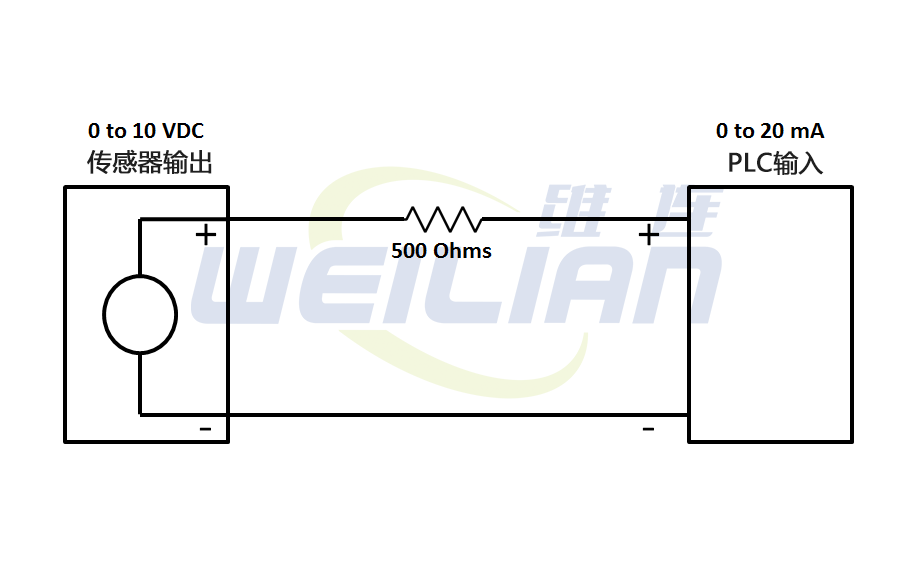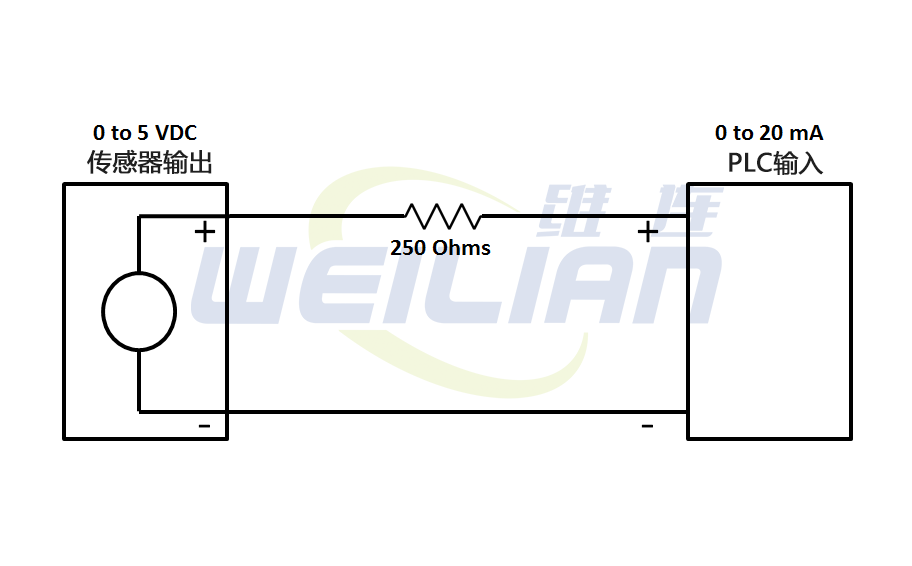
How to use resistance to convert the voltage to current?
In this article, we will discuss how to use the resistor to convert the voltage to current, such as the conversion of 0-10 VDC to 0-20 mA, and the conversion of 0-5 VDC to 0-20 mA.
Convert the voltage to current
The 0-10VDC signal using a device with only measuring current input is very simple. If the current input module is available, the 0-20mA signal will be accepted, but the 0-10VDC signal may not be accepted directly.
Basically, Ohm's law is used to calculate the resistance value in order to convert the 0-10VDC signal to current.

Example: The conversion of 0-10 VDC to 0-20 ma
Ohm's Law pointed out: R = V/i is the voltage, i is current, R is a resistance
R = 10V/0.020A = 500 ohm

I = V/R = 0/500 = 0mA
I = V/R = 10/500 = 0.02A = 20mA
Example: The conversion of 0-5 VDC to 0-20 ma
Ohm's Law pointed out: R = V/i is the voltage, i is current, R is a resistance
R = 5V/0.020A = 250 ohm

I = V/R = 0/250 = 0mA
I= V/R = 5/250 = 0.02A = 20mA
Notes:
To avoid damage, you must ensure that external current sources have short circuit protection under all conductors.
The external resistor is a source of error because it depends on temperature and its inaccurate.
In order to obtain as accurate measurement results as possible, it is recommended to use a resistor as small as possible.

